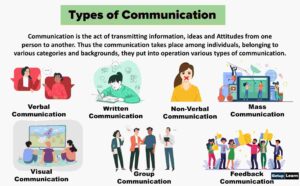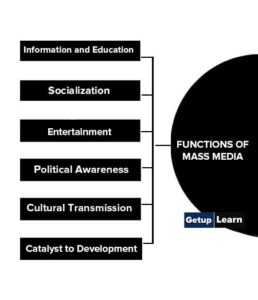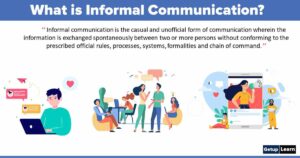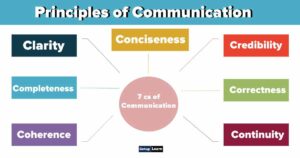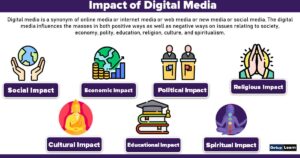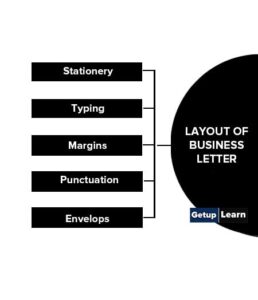Table of Contents
- 1 What is Written Communication?
- 2 Definition of Written Communication
- 3 Types of Written Communication
- 4 6 Principles of Written Communication
- 5 Advantages and Disadvantages of Written Communication
-
6 Advantages of Written Communication
- 6.1 Suitable for Lengthy Message
- 6.2 Written Proof
- 6.3 Clear Message
- 6.4 Less Expensive Method
- 6.5 Time-Saving
- 6.6 Presence of Both Parties Not Necessary
- 6.7 True and Effective
- 6.8 Communication in Different Places
- 6.9 Use as a Reference
- 6.10 Longevity
- 6.11 Delegation of Authority
- 6.12 Effective Communication
- 6.13 Maintaining Image
- 6.14 Proper Information
- 6.15 No Opportunity to Misinterpret
- 6.16 Controlling Tool
- 6.17 Easy to Verify
- 7 Disadvantages of Written Communication
- 8 Ways to Improve Written Communication
-
9 FAQ Section
- 9.1 What is written communication explained?
- 9.2 Why do you want to improve your written communication?
- 9.3 What is written communication simple words?
- 9.4 How can you improve written communication in the workplace?
- 9.5 What are the principles of written communication?
- 9.6 What are the advantages of written communication?
- 9.7 What are the disadvantages of written communication?
What is Written Communication?
This kind of communication involves any kind of exchange of information in written form. To put it simply, written language communication is communication by means of written symbols that are communicated by or to, or between people or groups. Thus, written communication is the presentation of ideas or essays that make a clear point, supply details supporting that point, and demonstrate unity and coherence of thought.
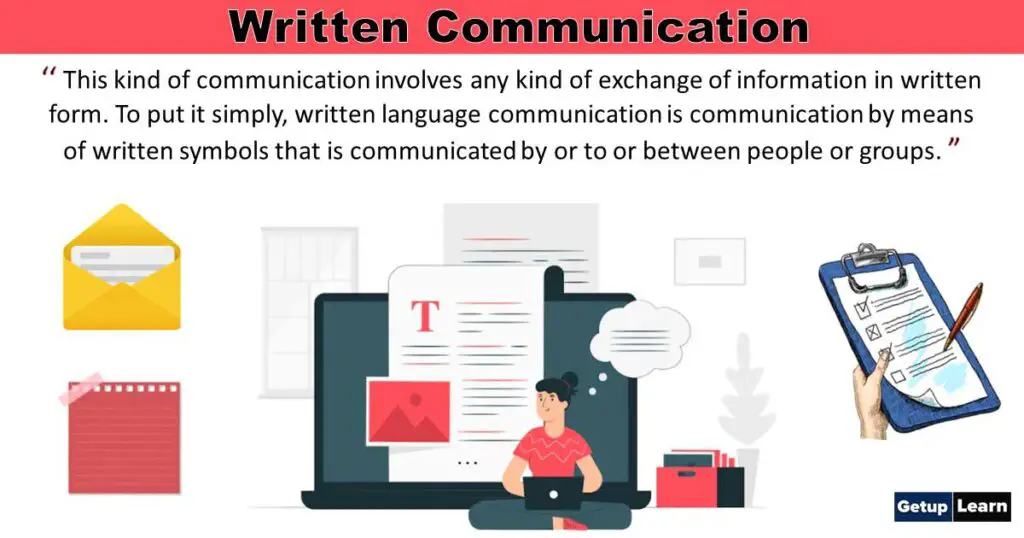
Table of Contents
For example, e-mails, texts, letters, reports, SMS, posts on social media platforms, documents, handbooks, posters, flyers, etc. Written communication requires careful consideration. Writing is a result of long practice and patience in learning. The written word is an indelible record of proceedings in a business environment and therefore needs to be carefully planned.
Definition of Written Communication
These are some simple and understandable definitions of written communication:
[su_quote cite=””]Written communication involves any type of massage which makes use of the written word. Written communication is the most important and the most effective for any mode of business communication.[/su_quote]
[su_quote cite=””]Written communication is the expression of language by means of visible signs. Despite the far wider use of oral communication, modern civilization cannot function without the written form. Business organizations need it to run their systems efficiently and effectively. It should be noted that written communication is not merely oral communication written down. It has its own dynamics. Its importance is mainly in organizing and documenting knowledge.[/su_quote]
[su_quote cite=””]Written communication is a type of verbal communication. The communication which is performed through various written documents is called written communication. It is a word-based communication that takes place in a written form.[/su_quote]
Examples of written communications generally used with clients or other businesses include proposals, letters, advertisements emails, the internet, websites, etc. Written communication within an organization includes circular letters, order letters, inquiry letters, collection letters, etc. All these letters serve important and multidimensional business purposes.
Types of Written Communication
Some important types of Written Communication include:
Emails
Emails are the most common type of written business communication, according to Startupbizhub, an online reference site. Business professionals use emails to communicate with each other, set up meetings, send documents, confirm appointments, and contact job candidates. Despite their relative casualness, your emails should still come across as professional.
Make sure you address your emails to all intended parties. Leaving just one person out can hinder your email’s effectiveness. Also, list the specific topic of your email in the “Subject” area. Avoid writing long paragraphs in emails. Instead, break your text up with bullet points and shorter paragraphs, according to Forbes online magazine.
Proposals
Proposals are documents that outline upcoming projects. For example, business consultants and advertising agencies submit proposals to companies for projects or special assignments. A marketing manager may submit a proposal to the research and development department to conduct product research.
Proposals are often just one or two pages long. Many companies use specific forms for their proposals. Make sure you clearly identify all the project steps and tasks in your proposal. Include the associated costs of each specific task as well. For example, list the printing, mailing, and postage costs if you are writing up a proposal for a direct mail project.
Reports
Reports are another type of written business communication. Companies use reports to inform employees about various aspects of the business. For example, the finance department will write financial reports to summarize a company’s profit and sales.
Similarly, a marketing research manager may write a report which summarizes the results of a customer phone survey. Write your reports in a structured format. Provide a brief introduction to your report. For example, tell department managers how and when you conducted a customer phone survey.
Include the key objectives you intended for the project. Summarize your findings in the body of your report. Add graphs and charts to clarify more complex concepts. Include an executive summary section in your report that highlights key findings or results. Moreover, always include a cover letter with your report to introduce it to managers or executives.
Brochures
Brochures are literature that features your products and services. Companie uses brochures to sell products or assist sales reps with sales calls. Companies produce brochures in many shapes and sizes. Some brochures are letter size while others are folded in half or thirds. Use color and pictures in your brochures that feature your main products or services. Break up each page of your brochure with plenty of blank space, which makes the brochure more readable.
6 Principles of Written Communication
The following are the six principles of written communication:

Clarity
Written communication requires clarity of thought and clarity of expression like using simple words, active construction, avoiding ambiguity and Jargon, using simple sentences, etc.
Completeness
The writer needs to check the completeness of the message. He should verify whether all questions are answered in the message or not.
Conciseness
Conciseness is communicating complete information about the idea in a few words. Concise writing also involves being mindful of word choice. Brevity is very important for effective writing. The writer should include only relevant facts and avoid repetitions.
Consideration
This principle advocates that the writer should consider the reader in his writing. It is always better to emphasize positive and pleasant facts. The writings should reflect the integrity of the writer.
Courtesy
According to this principle, courtesy will be observed through promptness in writing and giving replies, avoidance of imitating expressions, sincere apology for an omission, and generous thanks for a favor.
Correctness
According to this principle, the writer should give correct facts in the message. The message should be sent to the reader at the right time and in the correct style.
Written communication is accurate and serves as a permanent record. One can reach a large number of people through this media simultaneously. You can also fix responsibility for the people through this communication. However, written communication is much more time-consuming and more expensive when compared to oral communication.
Advantages and Disadvantages of Written Communication
These are the followings advantages and disadvantages of written communication:
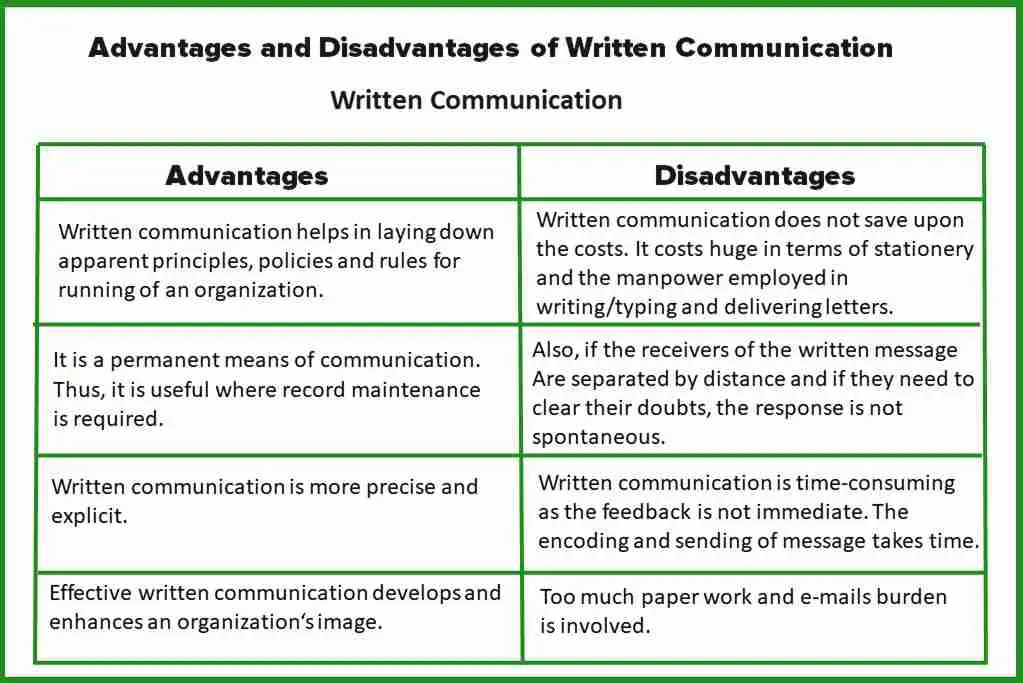
Advantages of Written Communication
There are several advantages of written communication some are given below:
- Suitable for Lengthy Message
- Written Proof
- Clear Message
- Less Expensive Method
- Time-Saving
- Presence of Both Parties Not Necessary
- True and Effective
- Communication in Different Places
- Use as a Reference
- Longevity
- Delegation of Authority
- Effective Communication
- Maintaining Image
- Proper Information
- No Opportunity to Misinterpret
- Controlling Tool
- Easy to Verify
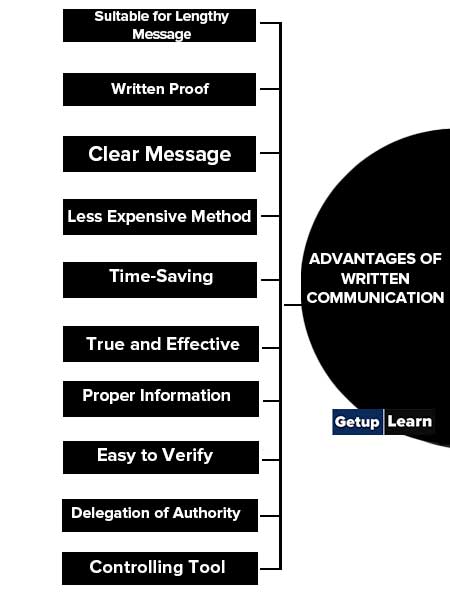
Suitable for Lengthy Message
Suitable for Lengthy Message: The lengthy message can clearly communicated with the help of written communication.
Written Proof
Written Proof: Some documents with regard to some special facts have to be kept for future reference. This is possible only through written communication.
Clear Message
Clear Message: A message may be long or short, it can be made understandable in written communication. There is no fear of anything being left out in such a system.
Less Expensive Method
Less Expensive Method: Messages are to be sent to distant places, if there is no urgency involved, it can be sent at a little expense through this method. But if the message is to be sent to a distant place quickly, this method is not useful.
Time-Saving
Time-Saving: Underwritten communication, there is no open conversation with a big human group. Hence, time is not lost in useless talks.
Presence of Both Parties Not Necessary
Presence of both parties not necessary: In this system, it is not necessary that the receiver should be present before the sender.
True and Effective
True and effective: The written communication is true and hence effective. A sender sends the information after careful consideration because of the written proof it carries with it.
Communication in Different Places
Communication in different places: When messages have to be sent to different places, written communication proves to be useful.
Use as a Reference
Use as a reference: If it is needed, written communication can be used as a future reference.
Longevity
Longevity: Written documents can be preserved for a long time easily. That is why; all the important issues of an organization should be back and white.
Delegation of Authority: Written communication can help the authority delegate the power and authority to the subordinate. It is quite impossible to delegate power without a written document.
Effective Communication
Effective communication: Written communication helps to make communication effective. It is more dependable and effective than those other forms of communication.
Maintaining Image
Maintaining image: Written communication helps to maintain the images of both the person and the organization. It also protects the image of the company or organization.
Proper Information
Proper information: It is a proper and complete communication system. There is no opportunity to include any unnecessary information in a written document.
No Opportunity to Misinterpret
No opportunity to misinterpret: there is an opportunity to misinterpret the information or messages of written communication.
Controlling Tool
Controlling tool: Written communication can help to control the organizational activity. The written document may be used as a tool for controlling.
Easy to Verify
The information and messages that are preserved can be verified easily. If there arises any misunderstanding any party can easily verify the information.
Others: Clear understanding, Legal document, Acceptability, Reduction of risk, Creating confidence, Easy circulation, Wide access or coverage, etc.
Disadvantages of Written Communication
Now let’s clarify the disadvantages of written communication which are given below:
- Unfit for Uneducated Persons
- Lack of Secrecy
- Wastage of Time
- No Quick Information About Feedback
- Expensive
- Red-Tapism
- Lack of Flexibility
- Delay in Response
- Delay in Decision Making
- Complex Words
- Lack of Direct Relation
- Other
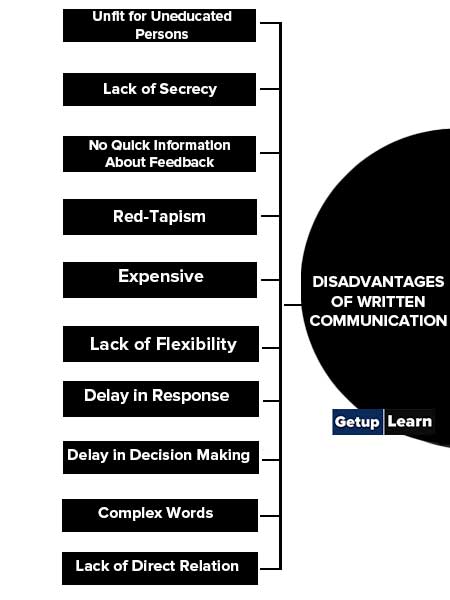
Unfit for Uneducated Persons
Unfit for Uneducated Persons: Written communication has no significance for uneducated people. They can only be made to understand orally.
Lack of Secrecy
Lack of secrecy: Because of written proof, nothing can remain secret.
Wastage of Time
Wastage of time: Because of the organizational constraints it is essential to send less important facts in writing, it shall be the waste of time, labor, and money.
No Quick Information About Feedback
No quick information about feedback: Some difficulty is felt when the reactions of the receivers are not known immediately. It also becomes difficult to bring an immediate change in the message.
Expensive
Expensive: Written communication is comparatively expensive. For this communication paper, pen, ink, typewriter, computer and a large number of employees are needed.
Red-Tapism
Red-Tapism: Red-Tapism is one of the most disadvantages of written communication. It means to take time for approval of a project.
Lack of Flexibility
Lack of flexibility: Since writing, documents cannot be changed easily at any time. Lack of flexibility is one of the most important limitations of written communication.
Delay in Response
Delay in response: It takes much time to get a response from the message receiver; prompt response is not possible in the case of written communication but is possible in oral communication.
Delay in Decision Making
Delay in decision-making: Written communication takes much time to communicate with all the parties concerned. So the decision maker cannot take decisions quickly.
Complex Words
Complex words: Sometimes the writer uses complex words in writing a message. It becomes difficult to mean out to the reader. So the objectives of the communication may lose.
Lack of Direct Relation
Lack of direct relation: If there is no direct relation between the writer and the reader, writer communication cannot help to establish a direct relation between them.
Other
Other: Prompt feedback is impossible, Slowness, Bureaucratic attitude, Understanding-problem between boss and subordinates, lack of quick clarification and correction, formality problem, lack of personal intimacy, etc.
Ways to Improve Written Communication
When trying to get your point across to others in writing, here are some ways to improve written communication:
- Vocabulary, Spelling, and Grammar
- Proof-Reading and Editing
- Brevity and Simplicity
- Logical Progression of Ideas
- Authenticity
- Confusing Language
- Poor Sentence Structure
- Information Overload

Vocabulary, Spelling, and Grammar
Vocabulary, spelling, and grammar these things do matter. A written document with a lot of spelling mistakes or grammatical errors loses credibility. It can look as if the writer doesn’t care about the quality of his or her work.
Proof-Reading and Editing
Few pieces of written work are born perfectly formed. Usually, you will need to read over a piece of writing a few times, making changes every time, to obtain a good quality finished product. If you can, it’s often a good idea to go away from a piece of writing for a few hours, days, or even weeks, so that you come back to it again with ‘fresh eyes.
Brevity and Simplicity
Try to get your written points across as simply and concisely as possible. As you gain writing experience and confidence, you can experiment with making your sentences and paragraphs more complex, but if in doubt, do keep it simple.
Logical Progression of Ideas
Most pieces of good writing from the shortest email to the longest thesis follow a very simple rule. This is that your written work should have a clear beginning or introduction, middle or main body, and end or conclusion.
Authenticity
Don’t pass other people’s written work or ideas off as your own – learn how to cite and reference other people’s work appropriately. Work on developing a fluid, personal writing style, and on finding your own voice.
Confusing Language
Confusing language means confusing words that can mislead the reader and cause communication breakdown or barriers between the writer and the reader. Some words are ambiguous, bombastic, vague, sexist, trendy, exaggerated, inflated, and archaic.
Again, we must always remember to write to convey meaning in plain English. It is better to use the familiar word for the far-fetched, the concrete word for the abstract, the single word for the circumlocution, and the short word for the long.
Poor Sentence Structure
Poor sentence structure relates to writing fragments instead of complete sentences and writing sentences that lack unity. Try to keep your sentence(s) short and compact to ensure that they are correct, logical, and easy to read. Long, complicated sentences can be difficult to read and understand. Word order is important for meaning.
Information Overload
Information overload means giving too much information, hence, the reader becomes overwhelmed and confused. This may also cause frustration and cast doubts on the writer’s credibility. Therefore, as a writer, you must decide what sort of information is required in order to produce a clear, concise, and relevant written work.
Read More Related Articles
[su_spoiler title=”What is Communication? | Mass Communication” style=”fancy” icon=”plus-circle”]
What is Communication?
[/su_spoiler]
[su_spoiler title=”Types of Communication | Principles of Communication” style=”fancy” icon=”plus-circle”]
-
Types of Communication
- Verbal Communication
- Non-Verbal Communication
- Written Communication
- Visual Communication
- Feedback Communication
- Mass Communication
- Group Communication
[/su_spoiler]
[su_spoiler title=”Nonverbal Communication | Verbal Communication” style=”fancy” icon=”plus-circle”]
[/su_spoiler]
[su_spoiler title=”Written Communication | Oral Communication” style=”fancy” icon=”plus-circle”]
Written Communication
[/su_spoiler]
[su_spoiler title=”Business Communication | Organizational Communication” style=”fancy” icon=”plus-circle”]
Business Communication
[/su_spoiler]
[su_spoiler title=”Formal Communication | Informal Communication” style=”fancy” icon=”plus-circle”]
[/su_spoiler]
[su_spoiler title=”Interpersonal Communication | Informal Communication” style=”fancy” icon=”plus-circle”]
[/su_spoiler]
[su_spoiler title=”Downward Communication | Upward Communication” style=”fancy” icon=”plus-circle”]
[/su_spoiler]
[su_spoiler title=”Barriers to Communication | Horizontal or Lateral Communication” style=”fancy” icon=”plus-circle”]
[/su_spoiler]
[su_spoiler title=”Self Development | Effective Communication” style=”fancy” icon=”plus-circle”]
[/su_spoiler]
[su_spoiler title=”Difference Between Oral and Written Communication | Theories of Communication” style=”fancy” icon=”plus-circle”]
[/su_spoiler]
FAQ Section
What is written communication explained?
This kind of communication involves any kind of exchange of information in written form. To put it simply, written language communication is communication by means of written symbols that are communicated by or to, or between people or groups. Thus, written communication is the presentation of ideas or essays that make a clear point, supply details supporting that point, and demonstrate unity and coherence of thought.
Why do you want to improve your written communication?
Because of these reasons: letters, reports, SMS, posts on social media platforms, documents, handbooks, posters, flyers, etc. written communication requires careful consideration. Writing is a result of long practice and patience in learning. The written word is an indelible record of proceedings in a business environment and therefore needs to be carefully planned.
What is written communication simple words?
Written communication involves any form of message which makes use of the written word. Written communication is the most important and the most effective for any type of business communication.
How can you improve written communication in the workplace?
Following are the ways to improve written communication:
1. Vocabulary, Spelling and Grammar
2. Proof-Reading and Editing
3. Brevity and Simplicity
4. Logical Progression of Ideas
5. Authenticity
6. Confusing Language
7. Poor Sentence Structure
8. Information Overload.
What are the principles of written communication?
These are the six principles of written communication:
1. Clarity
2. Completeness
3. Conciseness
4. Consideration
5. Courtesy
6. Correctness.
What are the advantages of written communication?
Advantages of written communication given below:
1. Suitable for Lengthy Message
2. Written Proof
3. Clear Message
4. Less Expensive Method
5. Time-Saving
6. Presence of Both Parties Not Necessary
7. True and Effective
8. Communication in Different Places
9. Use as a Reference
10. Longevity
11. Delegation of Authority
12. Effective Communication
13. Maintaining Image
14. Proper Information
15. No Opportunity to Misinterpret
16. Controlling Tool
17. Easy to Verify.
What are the disadvantages of written communication?
These are the disadvantages of written communication:
1. Unfit for Uneducated Persons
2. Lack of Secrecy
3. Wastage of Time
4. No Quick Information About Feedback
5. Expensive
6. Red-Tapism
7. Lack of Flexibility
8. Delay in Response
9. Delay in Decision Making
10. Complex Words.

